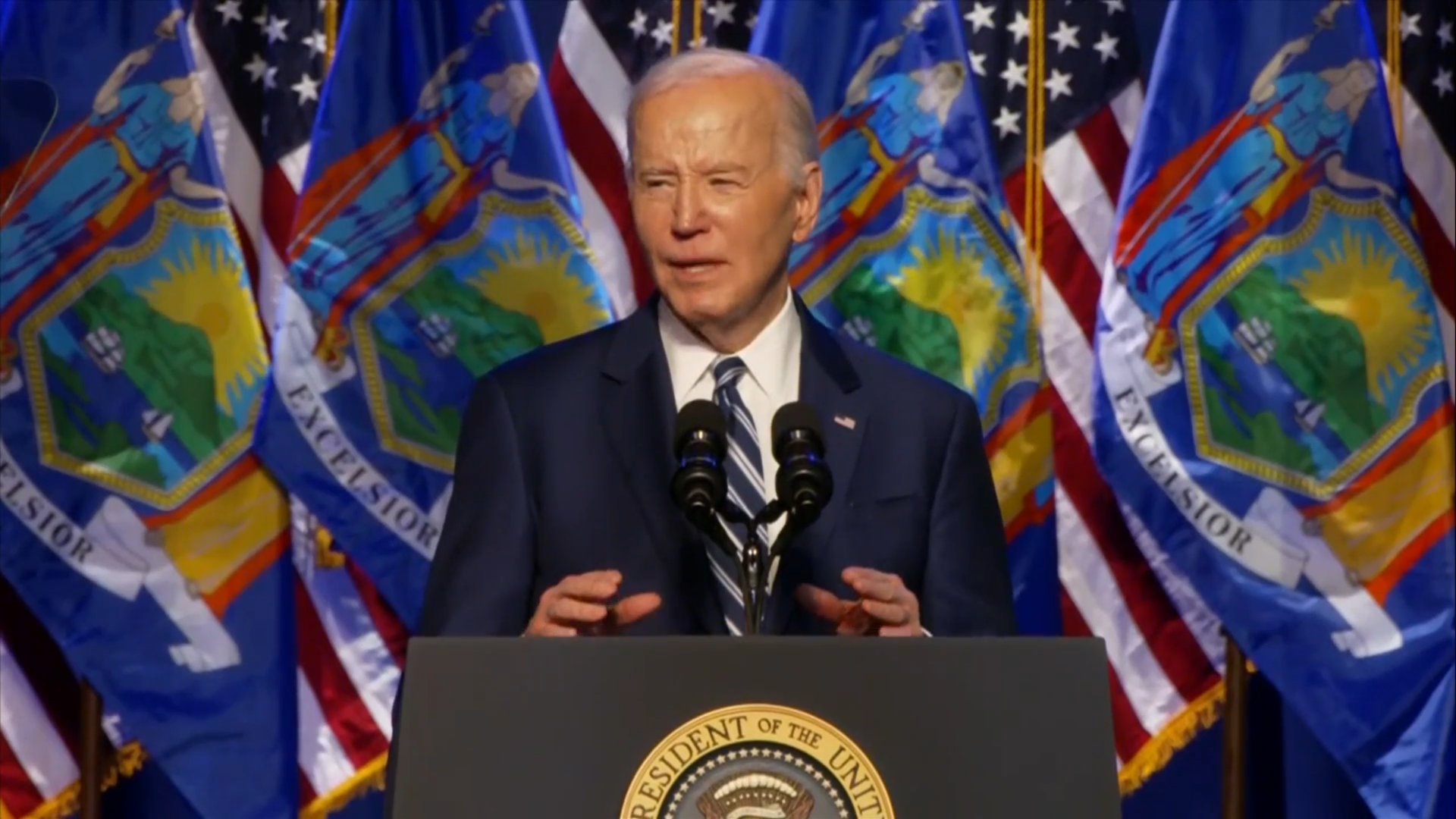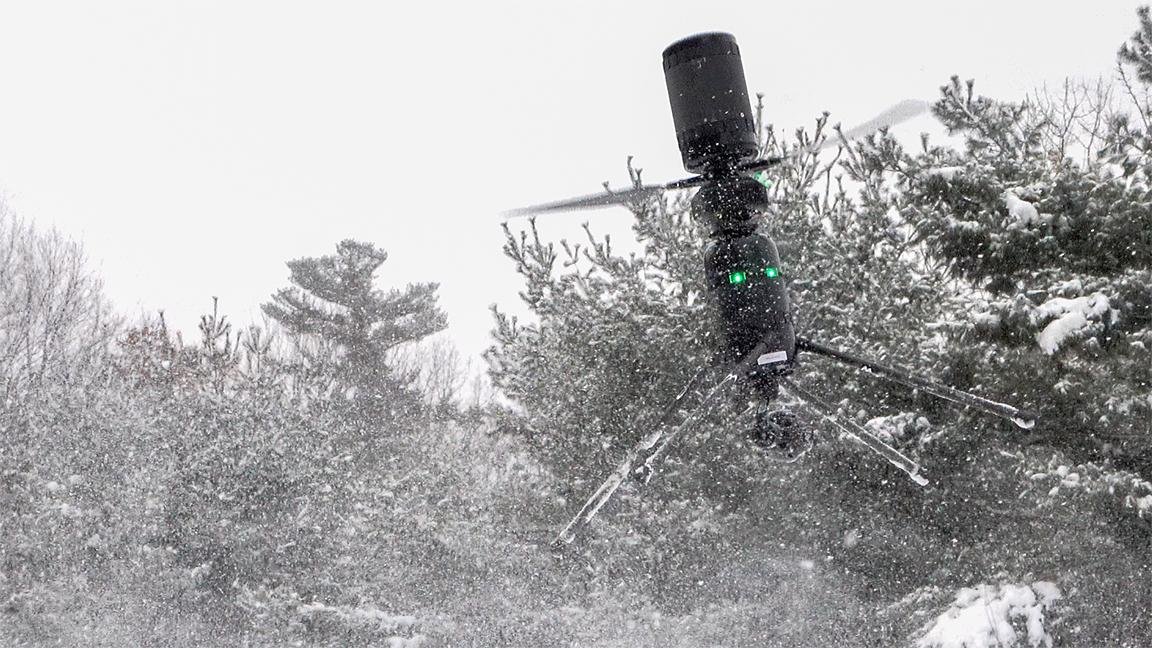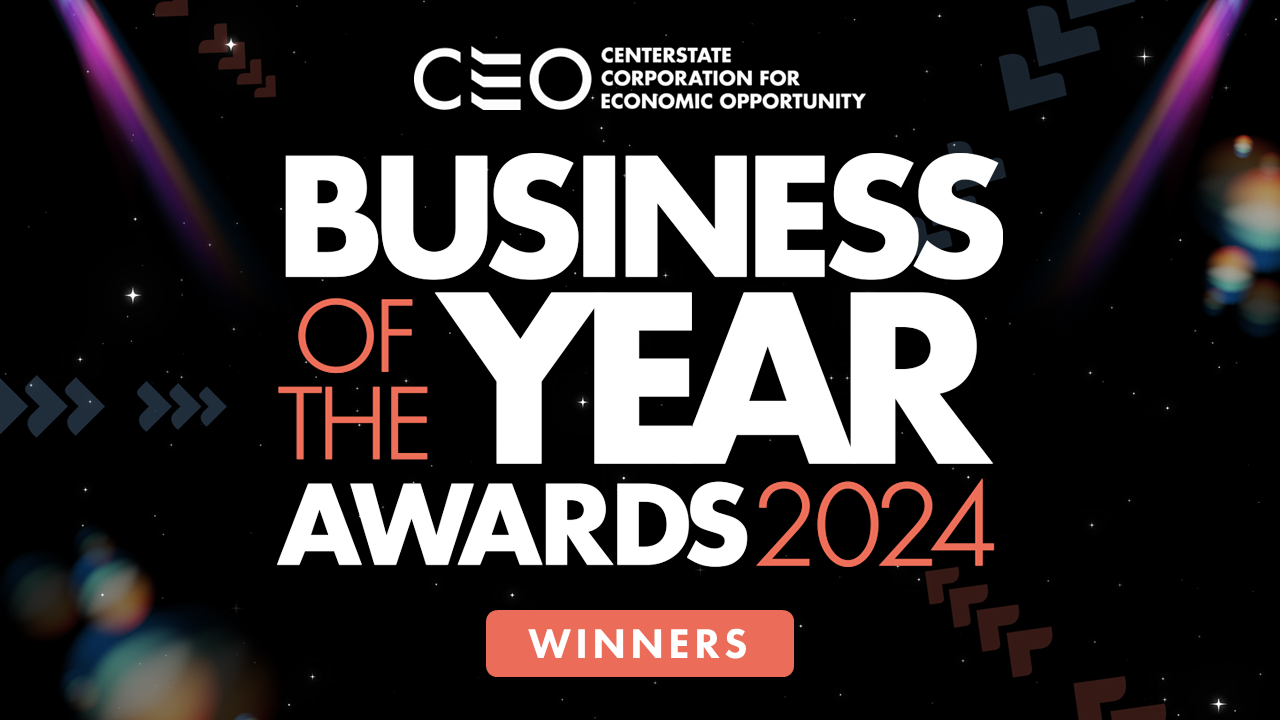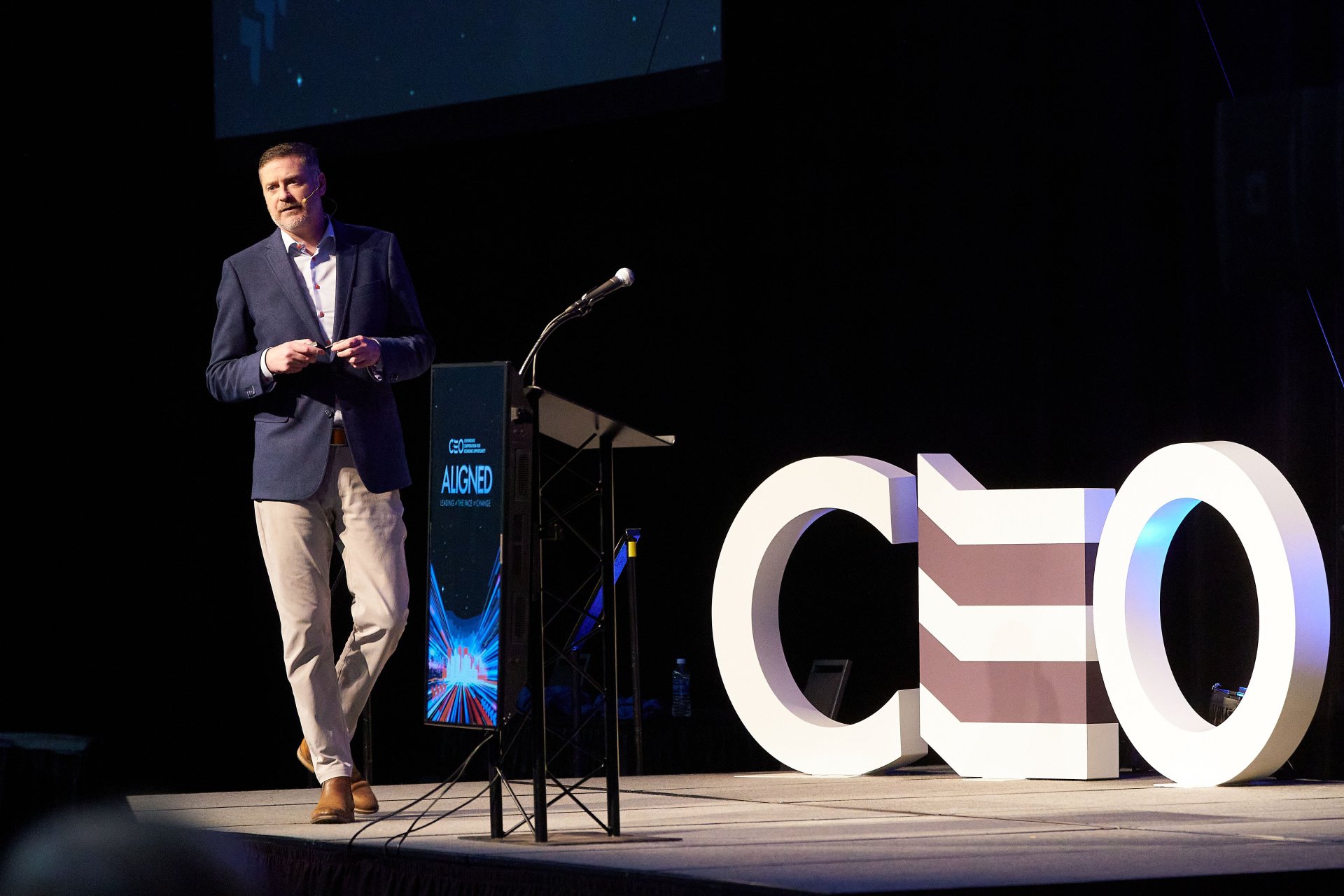2018 CenterState CEO Annual Meeting Remarks by Robert M. Simpson, President and CEOPosted on April 18, 2018 |
Image

|
Good afternoon.
To Chairman Jim Fox, thank you for the time, energy and insight that you have invested in our mission, in this organization, and in me personally. Your friendship and support have challenged me and helped me grow and I am grateful.
To our members and directors, thank you for the confidence that you place in us year in and year out to navigate an ever-changing economic and civic landscape with the goal of creating a place where business thrives and people prosper. 2018 is off to a great start and we thank you for investing in us.
To our entire staff at CenterState CEO, I’d ask that you all please stand.
Just last night, CenterState CEO was recognized as one of the Best Companies to Work for in New York State at an awards celebration, in Albany. Recognition like that is not an individual award. Culture is a team sport. And each and every one of you contribute to that culture of service and success by going above and beyond for our members and this region. I am immensely proud to be your colleague. Thank you for making CenterState CEO such a great place to work.
And to my wife Corinne. True story. Twenty-two years ago as Corinne and I drove back to Colgate after our first date, I found myself lost in a conversation so intense that I forgot to slow down entering a hairpin turn and spun the car around 360 degrees before coming to a stop on the opposite shoulder of the road. In an age before cell phones, this was the original distracted driving I suppose. Here we are all these years later and you are still the center of my attention.
Let’s Pivot.
In 1912, an industrial soap and cleaner company was founded in Cincinnati, Ohio. By the 1930s, their premiere product was an industrial wall-paper cleaner used to collect the soot and dust from coal-fired furnaces in homes and businesses throughout the United States. By the 1950s, oil and gas furnaces were rapidly replacing their dirtier predecessors, and demand tanked. Yet, just as their primary market was collapsing, the Kutol Products Company began to take off.
It turns out that the tacky, clay-like cleaner had another use. And a far bigger and more sustainable market to serve. Kids. 70 years later, more than 2 billion cans of Play-Doh have been distributed worldwide.
Closer to home, Ascension Web Design was founded by two Central New York entrepreneurs in 1998 to create webpages for customers. By 2002, the company was recast as Ascension Gaming Network, focusing on creating magazines and content for competitive gaming card players. When advertisers stopped spending money with the magazine, Chedy Hampson pivoted again and launched TCGPLayer.com in 2006. That online marketplace was responsible for 35 million transactions in 2017.
Not only has TCGPlayer.com become a dominant force in its market, but it has also become one of the fastest growing companies in Syracuse and is literally infusing our downtown with new employees, new energy and a brand new corporate headquarters.
The day after we announced our theme for this year’s Annual Meeting, I received a friendly missive from a member of ours suggesting that “Pivot” was overplayed. That it had become nothing more than business school pabulum at this point, more marketing than substance.
As someone who has never gone to business school and who spends more time these days reading Dr. Seuss than Jim Collins, I thought that seemed pretty harsh. But nevertheless, I did my homework. And it turns out that there are workbooks for determining when to pivot. And how to pivot. And what to pivot too. There is even an amazing sub-culture of pivot-people with the time and energy to debate whether or not pivoting is in fact brilliant ju-jitsu, where you use the force of an oncoming opponent against them, or the ultimate act of submission and failure, admitting that the strategy you used one day is no longer valid and therefore you must have been wrong to choose it in the first place.
But amidst it all, and at the heart of David Lee’s comments, there is a fundamental lesson for people, businesses and communities. Markets change. Customer needs evolve. And we ignore these signals at our own peril.
David’s message to us today is fundamentally a hopeful and optimistic one. Yes, it is an eye-opening reminder about the rapid pace of technological advance and the profound impacts that those changes will force on people, businesses and society.
But it is also a potent reminder of the perseverance of the human spirit and the ability to anticipate, identify, and react proactively to the changes in our world and our society.
I have a very vivid memory from my childhood. I am with my father on a beach in Brittany, France. We had been visiting with the family that my mother had stayed with when she was an exchange student nearly 20 years prior.
It was early fall and cool, too cold for swimming. But the bay beneath the cliffs had one of those long, gently sloping beaches where the ocean could recede for miles, which made it perfect for exploring at low tide.
We had been digging in the mud and hopping from puddle to puddle for a long time before my father began to tell me about the last time he had been on that beach, when he was visiting my mother as a student himself. About how he had gone out alone to do this very thing one day all those years ago. About how he had gotten distracted by the discoveries around him and took his eye off the horizon. And how, quite suddenly and forcefully, the tide had come back in.
I don’t remember how far out we were in the bay. All I know is that the world suddenly felt very small and the crashing waves in the distance felt very close.
Convinced that the tide was now a living, growing, malevolent thing, I panicked.
I remember my father leaning down and putting his hands on my shoulders to calm me, and looking back up at him through anxious and uneasy eyes. “Do you know what I did when that happened?” he asked calmly, but with purpose.
I shook my head.
“I ran,” he said with smile before tagging me and leading a footrace back to the beach.
Only when we stand rigidly in the face of change do we place ourselves at the mercy of those forces. Unable to move, unable to hold back a rushing tide, we are simply overrun.
Instead, when we preserve our ability to be agile and pivot, we have the ability not only to not be overrun, but to in fact use those forces rushing at us to move us forward.
Now, it’s one thing to recognize that some adaptation is needed. That’s mostly common sense. But the HOW is always trickier.
Amidst the volumes of literature on the topic, there is one lesson that resonated most profoundly with me, and that has the most applicability to our present circumstance in Central New York.
The most successful companies and communities have figured out how to be problem focused, not product focused. In other words, they have learned that growth is not predicated on what you have to sell, but rather on the customer or community need you are trying to solve.
People sometimes ask me why we can’t be more like a traditional economic development organization. Or why we can’t act more like a traditional Chamber of Commerce. And the honest answer is: those roles have been automated.
The work of a site selector looking to understand the economic and demographic makeup of a community can be done with a laptop and an internet connection which makes Google the most important economic development organization in the world.
And for those looking to market their business or network with their peers LinkedIn offers a faster, more targeted Chamber mixer without having to leave the office or miss a dinner at home with their kids.
That is not to say that human contact is not critically important, of course it is. But it reminds me of an anecdote I have heard David Lee share about how most employees are treated today. They are given three words on a business card and asked to be just that. When the reality is, we all have the potential to be so much more. And we need to be so much more to survive and thrive in this rapidly evolving landscape.
Today, I can see this simple but powerful lesson in so much of what we do at CenterState CEO.
When our economic growth doesn’t measure up to the national average, it’s tempting to fall back on the traditional playbook and invest more in marketing or attend more trade shows to generate more leads.
But all of the data and economic research shows us that a mere two percent of economic growth in metropolitan cities around the US comes from business attraction efforts. And much of that microscopic number is skewed by large gains in a small handful of major metropolitan areas like Austin and Seattle.
We can try to swim up that stream all we want. Or we can pivot and shift more of our resources, time and energy to working where we have the greatest potential for economic return – with our existing businesses.
If you look at the most significant economic development announcements of the last several years, the smart choice becomes clear.
SRC announces that it plans to add 1,000 jobs over the next five years, in part due to the opportunities presented in the field of unmanned systems and in pursuit of growing global markets.
Saab doesn’t just announce that they are creating 260 new jobs in the region, they put an exclamation point on that announcement by moving their North American Headquarters from Washington to Syracuse.
And HilRom announces that instead of taking jobs out of Skaneateles after acquiring Welch Allyn that they would invest locally, building 100,000 square-feet of new office space and adding 110 jobs.
Or consider our region’s efforts to position itself at the forefront of research for drones and unmanned systems. These efforts didn’t take root because we had a ready-made product to sell the world. They took root because we developed a roadmap and resource pool that is helping to solve the critical problem that regulators and industry face – how to safely integrate drones in to the commercial airspace. And now NUAIR and our partners in Utica-Rome and across this state are aligning a multi-dimensional Rubik’s cube that involves technology, innovation, standards and certification and public policy to unlock a trillion dollar industry making our efforts in this region very valuable and very attractive to prospective partners.
Or take The Tech Garden, which opened its doors more than 12 years ago offering discounted space and some shared amenities to early stage startups looking to build and grow a business in Syracuse, New York.
Over the years, as our startup ecosystem has evolved, we’ve had to evolve too. No longer just a physical space for companies to collide, The Tech Garden is now the hub of a rapidly evolving technology ecosystem built on the simple premise that we must add value to our clients at every stage of their evolution, from ideation to acceleration, from incubation to expansion. There is no off-the-shelf solution for these customers.
By being agile, and focused on adding value, The Tech Garden has grown from home to a dozen small companies a decade ago to home to more than 35 today. Our programming serves more than 100 startups a year across Upstate New York. Our alumni represent some of the fastest growing and most visible technology success stories in our region, including Ephesus Technologies, SpinCar and TCGPlayer.com – each of which has chosen to remain in downtown Syracuse as they populate an organically emerging innovation district along the once defunct Warren Street Corridor.
And all the while we have been putting our money where our mouth is, investing nearly $9 million in more than 40 companies over the last eight years making CenterState CEO the largest angel investor in Central New York and one of the largest in all of Upstate.
But there is perhaps no greater example of the need for this organization and our business leadership to be problem-focused than the considerable racial and socio-economic disparities facing our community.
Think quietly to yourself, for moment. When you hear that 32 percent of the residents that live in the city of Syracuse live at or below the poverty line, what image comes to mind? Or when I remind you that 50 percent of those under the age of 18 also live in poverty, what do you feel inside?
In June of 1947, a newly confirmed Secretary of State delivered an address to more than 15,000 people in Harvard Yard who had lived for more than a decade with the drumbeat of the Second World War. It was only when the peace had been won that eyes of the world came to rest for the first time upon the full-scale of the great socio-economic disaster that had engulfed Europe.
His name was George C. Marshall.
“The problem is one of such enormous complexity,” he began, “that the very mass of facts presented to the public….make it exceedingly difficult….to reach a clear appraisement of the situation. Furthermore, the people of this country are distant from the troubled areas of the earth and it is hard for them to comprehend the plight and consequent reactions of the long-suffering peoples.”
But comprehend we must.
How else can we possibly prepare ourselves to remove this shadow from our future if we are unable even to acknowledge and confront the specter of our past?
32 percent of our city is 45,880 people.
50 percent of our children is 10,108 kids.
And while poverty is an economic condition that requires economic solutions, these statistics hide a darker reality about race and opportunity that we cannot ignore.
According to a recently completed five-year plan for the Southside prepared by APD Solutions, in the city of Syracuse, Caucasians represent 56 percent of the population but hold 85 percent of the jobs. African Americans, on the other hand, account for 30 percent of the population and just 10 percent of the jobs while Latinos represent 8% of the population and 3.4 percent of the jobs.
These are not conditions on the ground in some foreign country across an ocean. They are present circumstance among our neighbors. And without a multi-faceted and intentional effort by every sector of our community this problem will only get worse.
As David Lee pointed out, today’s workplaces are increasingly complex. And that pace of change is increasing exponentially. Yet even today, only 6 percent of the jobs in Syracuse are attainable to someone with less than a high-school education and a full 46 percent of jobs require a college degree or more. But only 9 percent of the African American population in the City and only 12 percent in the County has a bachelor’s degree or higher.
In full disclosure, I live in the city. And I believe, unequivocally, that cities are the engines for modern economies. But what I say next comes not from bias, I hope, but from pure, objective pragmatism. Our society simply cannot sustain itself with this level of social, economic and fiscal imbalance. And our city, and some of our inner ring suburbs, are where the greatest inequities and imbalances persist. There is no off the shelf-solution for this multi-dimensional scourge.
This is the choice we face. Shall we stand rigidly in this path and do nothing? Shall we be overrun? Or might we turn the full measure of our attention, our resources and our humanity to the problems at hand and confront them together by matching their scale and intensity?
This is why we are calling on our elected and business leaders – and yes, those of you in this room -- to bring investment and jobs to the doorstep of the City and to our neighborhoods themselves because it is not sufficient to promise to bring people to jobs with an under-funded public transportation system, we must instead bring good-paying jobs to the people who need them the most.
It is why we launched Work Train to engage with you, our employers, in placing more than 500 un and under-employed residents into good jobs with career pathways in construction, health care and manufacturing.
It is we why launched Up Start, to target the expertise of our Economic Inclusion and Innovation and Entrepreneurship portfolios on the needs of our most vulnerable communities supporting 17 new neighborhood-based businesses last year with a goal of serving more than 100 in 2018.
It is why we choose to partner with the Upstate Minority Economic Alliance to help us reach, and unlock the economic potential of, our region’s 10,000 minority owned businesses.
It is why we are partnering with the Allyn Foundation to lead a Community Prosperity Initiative that seeks to replicate the focus and gains of recent neighborhood revitalization efforts on the Northside and Near Westside to other parts of our City and our region that have been left behind.
And it is why we are proud to partner with the Syracuse City School District on groundbreaking initiatives such as the development of 26 cutting edge Career and Technical Education programs including the first ever high-school CTE program for drones. Because opportunity begins with education and the development of the ability to problem-solve.
With my son Ben in Kindergarten, now, that has never been more apparent to me. He is thriving in school. Learning new things every day. Full of curiosity and confidence. And with the opening of the new climbing gym in Franklin Square, he has a new favorite activity. We climb together three or four times a week.
It’s fascinating. A gym full of grown adults climbing walls that are 16, 22 and even 45 feet high. With decades of experience testing and building confidence in their own limitations. And then there is Ben. Six just yesterday. Sizing up a new route.
When he finds one he wants to try, he leaps on to the wall and picks his way up three or four holds before jumping off. He puts chalk on his hands. He climbs back on and goes as high as he can before he finds a move that perplexes him, and then he climbs back down. He will sit and stare at the wall for a while, trying to figure out what to do next. What holds are best for his hands? Where to put his feet for maximum stability and reach. And then he’ll go back and work that one move until he gets it and then climbs the rest of the way to the top.
The world he is growing up in will require tremendous agility. So as parents, what more can we do than let him watch other people climb to the top every day. He sees them do it so he knows it’s not a question of IF he can make it. But HOW. It’s just another problem to solve.
Which brings us to one of the most important problems that WE have to solve and a defining moment for generations to come. Interstate 81.
Let’s look, for a moment, at the issues and opportunities we are trying to resolve and exploit:
A horribly unwelcoming overpass.
A physical barrier between the Hill and Downtown.
A high-speed highway that that has reached the end of its useful life.
Dramatic under-utilization of what could and should be the most valuable taxable property in our entire region in a city that desperately needs to add to its tax-base for its very survival.
Concerns about truck traffic diverting through towns and villages to the West.
Economic concerns from the Town of Salina.
Noise and traffic and quality of life issues in Dewitt.
The potential loss of visibility for Destiny.
The disruption that even the shortest and least intrusive construction schedule will invariably create.
An opportunity to transform the Southside of Syracuse by partnering with the Syracuse Housing Authority to rethink, redevelop and improve so much of our public housing.
A chance to redevelop an entire corridor through our city with an inclusive approach to development that reflects our values and aspirations.
To build mixed-income, mixed-used and pedestrian friendly neighborhoods that will appeal to the changing demographics of America and let us capitalize on the wave of re-urbanization that is sweeping the country.
Now, does anyone really believe that any highway solution – a community grid, a new viaduct or a tunnel -- will truly and adequately address each and every one of these concerns and opportunities that have surfaced in this decades long debate?
Of course they won’t. Which is why, as we approach the moment of decision, we must expand our conversation beyond the roadway to the true and fundamental issues at stake. We are never going to find “consensus” on which solution is preferred. I don’t know of a single infrastructure project of this scale in the country where there isn’t debate, disagreement and diametrically opposing viewpoints.
But it is time to decide. Inaction in the face of opportunity is not a legacy we can afford.
So instead of digging our heels in to more deeply entrenched positions, here are two problem-statements we might consider trying to solve:
The future of mobility, just like the future of robotics and artificial intelligence at the heart of David Lee’s talk, is changing at a breakneck pace. Our decision must be future-focused.
And the solution that is chosen, no matter what it is, will have both positive and adverse impacts on certain people, business and communities.
By focusing on these problems instead of just the limited menu of traditional transportation solutions we have been offered, we might enable a more meaningful reflection on what our entire region really needs to thrive for generations to come.
An effective solution requires a more robust public transportation system to accompany it. A visionary solution would include a redevelopment commission to maximize the aesthetic, social and economic value of the land around it. And a fair and comprehensive solution would involve a strategic mitigation fund to attend to the concerns of those who are disaffected in the same way that our governments provide adjustment assistance for those businesses and workers impacted by foreign trade.
And while we may continue to disagree long after a decision is made, we should not fail the basic test of leadership and decency -- to show compassion for each other’s perspectives and opinions. For how we make this decision may in fact prove to have as lasting a legacy as what we decide.
I have tremendous faith in this community. We will always face challenges. And the world around us – our environment, technology, economic and demographic forces – will never stop trying to overrun us. This is our problem to own. To manage with agility. To lead through, over and around.
I do not fear the future David Lee describes. I embrace it. And believe, unequivocally, that we shall use these forces to move us forward.
Thank you.
Other
CEO News









